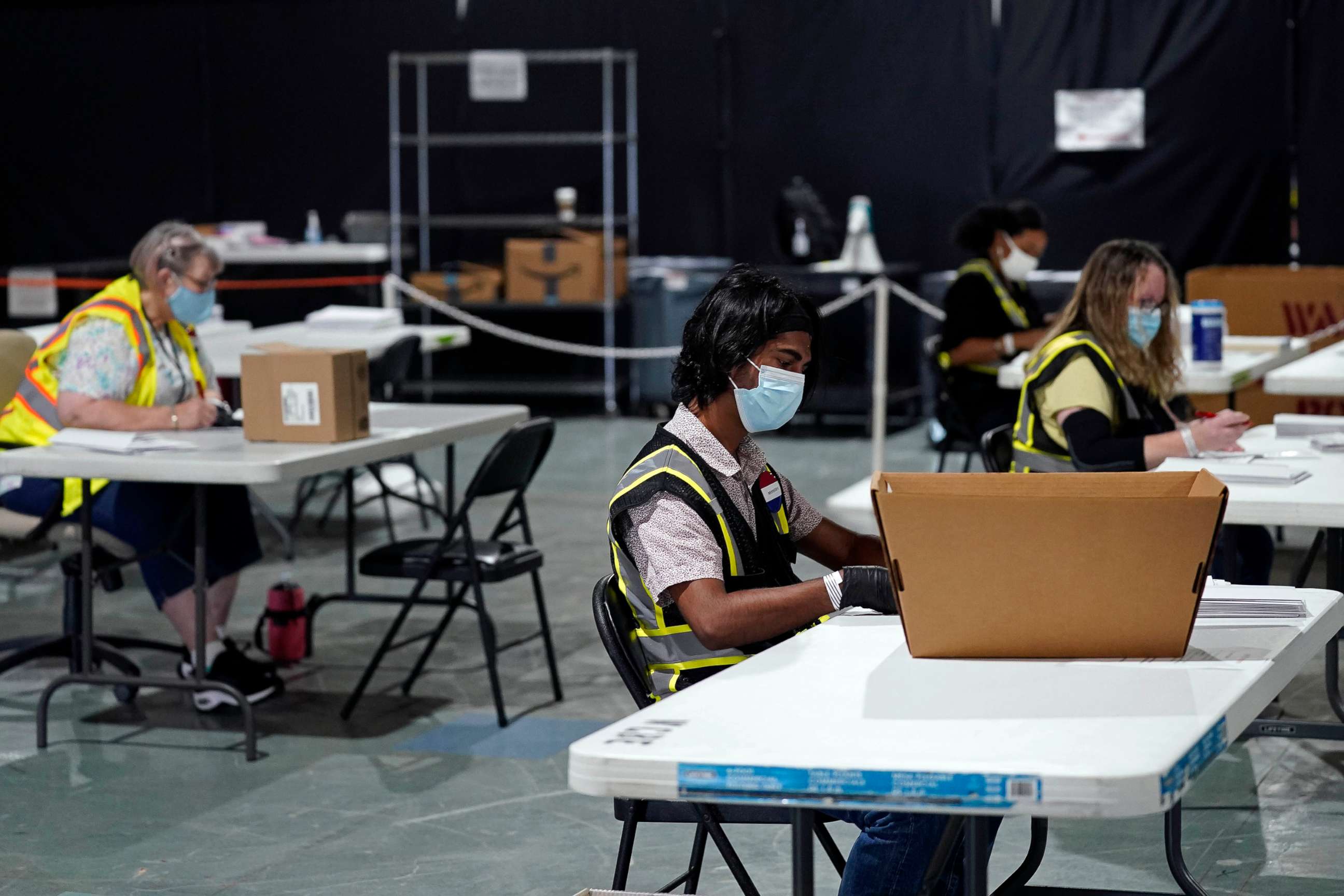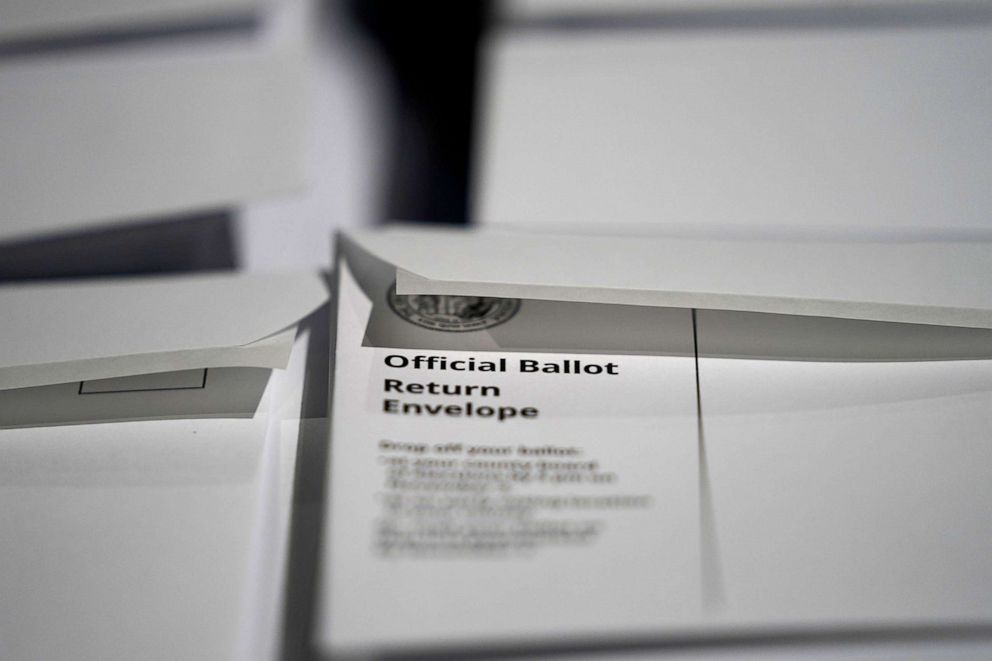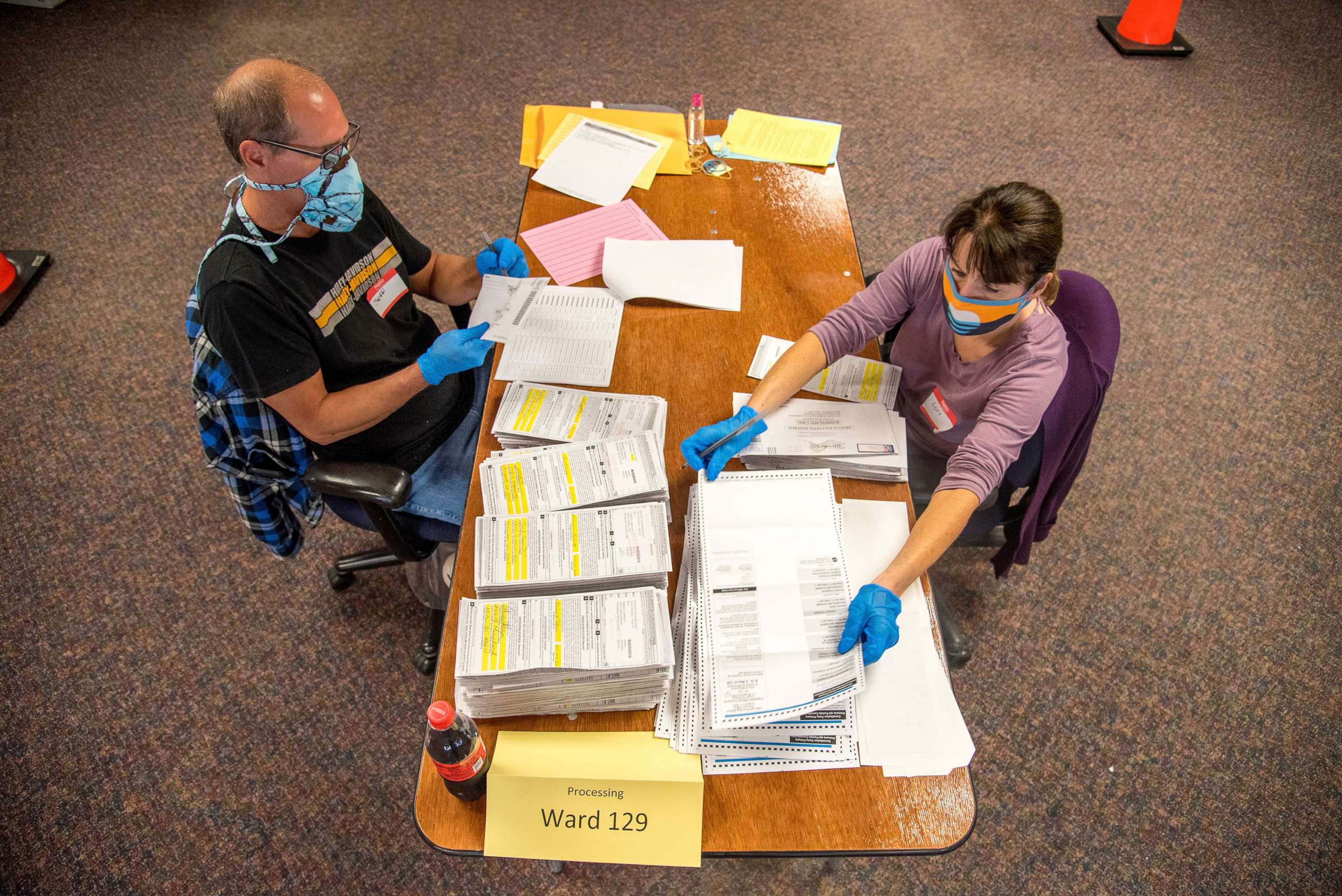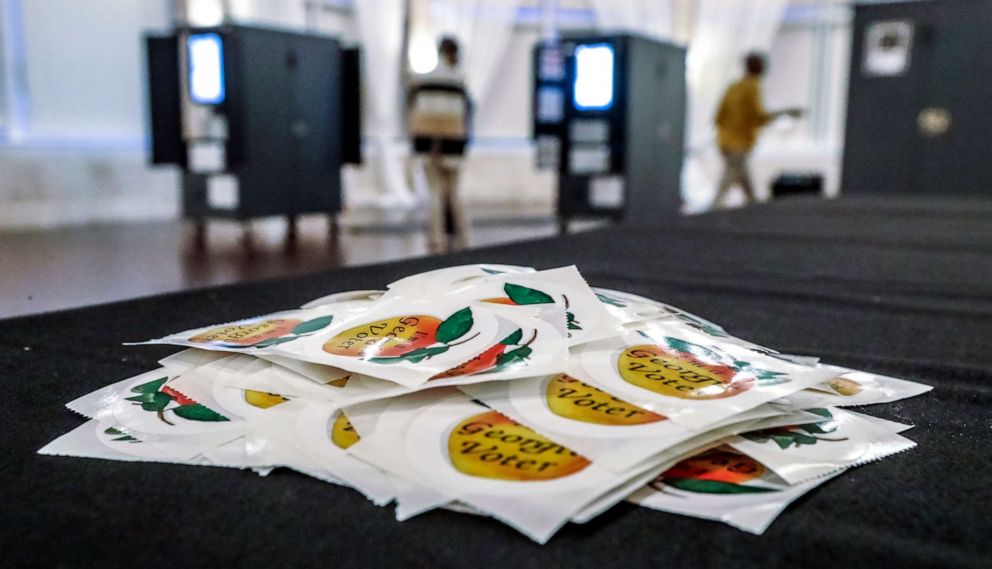Early voting starts today: Here's what to expect
The first mail-in ballots are being sent out to voters in North Carolina today.
This year's election, which will be unlike any other, officially kicks off on Friday.
Election officials in North Carolina sent out the first ballots to the nearly 600,000 voters who requested them, marking the start of the final sprint to Election Day over the next two months.
North Carolina's opening of early voting comes as elections have been transformed by the coronavirus, and as President Donald Trump continues to politicize the voting alternative to sow doubt about its integrity.

Despite the president's rhetoric, mail-in voting works and is in high demand.
Officials are seeing skyrocketing requests from voters to cast their ballots away from polling places across the first few states that begin early voting -- underscoring just how much has changed this cycle as millions turn to mail-in ballots to avoid exposure to the virus.
Here are some of the key dates that lie ahead as voting begins:
Sept. 4: Mail-in voting kicks off in North Carolina
In North Carolina, election officials are starting to mail ballots to any eligible voter who requested an absentee ballot in advance on Friday, officially kicking off the fall voting season.
Both legal and political pressure led to state lawmakers enacting changes to vote-by-mail in the state in June, which included allowing voters to request absentee ballots by email or fax, creating a new ballot tracking system that will allow voters to track their ballot, requiring election officials to notifying voters if there is a problem with their ballot and giving them an opportunity to correct it.
The result is a crush of absentee ballots requests this year -- a 21-fold increase from the same time in 2016 -- according to election officials.
So far, 591,379 North Carolina voters have requested ballots by mail, compared with just under 28,000 four years ago, according to data compiled by Michael McDonald, a professor of political science at the University of Florida, with the U.S. Elections Project. Registered Democrats account for 53% of those making the requests, while 31% are unaffiliated voters and roughly 16% are registered Republicans.
Sept. 14: Pennsylvania and Kentucky begin sending mail-in ballots
Voters in Pennsylvania and Kentucky quickly follow suit and will be able to request and send back their absentee ballots about a month-and-a-half before Election Day, starting on Sept. 14.
While Pennsylvania's election rules are still up in the air, Democratic Gov. Tom Wolf recently called on the state legislature to address four election-related issues before November, including: Counting ballots that arrive three days after Election Day as long as they were postmarked by Nov. 3; allowing election officials to begin processing ballots three weeks before Election Day; requiring counties to start sending mail-in ballots to voters at least 28 days (four weeks) before the election; and allowing counties to begin filling poll worker vacancies immediately rather than five days before the election, as is currently required.

Pennsylvania Republicans disagreed with a number of these recommendations and on Wednesday, the Pennsylvania State House advanced a bill that would allow counties to begin processing mail-in ballots three days before Nov. 3, while also cutting out the option of allowing voters to use ballot drop boxes to cast their votes. The bill is now headed to the Pennsylvania State Senate.
As of Aug. 3, more than 1.8 million Pennsylvanians had requested mail-in ballots. Of those requests, 70.2% came from registered Democrats, and 28.9% were requested by registered Republicans.
In Kentucky, the Democratic governor and Republican secretary of state reached a bipartisan agreement for the 2020 election, for which turnout is expected to more than double from the June primary, according to the secretary of state's office. The higher volume of voters led state election officials to tighten the absentee voting rules from the primary to not overwhelm the state's infrastructure. The new agreement allows voters who are concerned about contracting COVID-19 either due to age or health concerns to request an absentee ballot and for voters to track ballots with bar codes. Officials will signature-match every single ballot before they're counted.
The commonwealth has a total of 3,497,941 registered voters, according to their most recent data, with a net 21,548 voters being added from June 24, when the voter rolls reopened after the primary election, through July 31. So far, 223,000 registered voters requested an absentee ballot for the general election, as of Thursday, which includes 161,148 Democrats and 48,998 Republicans making requests.
Sept. 15: Georgia begins mailing absentee ballots
State election officials in Georgia, the site of one of the most chaotic primary elections this year, begin mailing ballots to voters who've requested them on Sept. 15.
While Secretary of State Brad Raffensperger's office will not be proactively sending all active registered voters an application to request an absentee ballot for the general election, as they did for the June 9 primary election, many changes have been made in hopes of having a more streamlined election in November:

Raffensperger created a statewide, centralized absentee ballot request online portal, which launched on Aug. 31, according to a spokesperson for his office, voters have reported that it's incredibly easy to use, and took them less than a minute. Voters who provide an email will be notified right away their application has been received, which is a new feature for the general election.
County election officials are allowed to install secure drop boxes for returned absentee ballots, which is also allowed for primary elections.
Counties can begin processing -- but not tabulating -- absentee ballots beginning the third Monday before Election Day, which is Oct. 19; the secretary's implementation manager told ABC News that once the processing is done, the actual tabulation is very quick -- just pressing a button on a machine.
Raffensperger's office will deploy a technician to every single polling precinct statewide to quickly address issues, which during the primary were often due to lack of familiarity with the equipment. A federal judge ruled on Tuesday that ballots postmarked on or before Election Day and received within three days following the election must be counted.
State Farm Arena, home to the NBA's Atlanta Hawks, will serve as an early voting center for Fulton County voters. According to data from the secretary of state's office, 70% of the Election Day problems were in Fulton County -- the largest in the state. Georgia has three full weeks of in person early voting, so if voters utilize this arena, which must be open on at least one Saturday, that could result in much shorter lines on Election Day in Atlanta than during the primary.
As of Thursday, about 800,000 Georgia voters have already requested to vote absentee in the November election, and that figure has been increasing by about 10,000 requests daily, according to Raffensperger's office.
There are 7,002,328 active registered voters in Georgia, according to the secretary of state.
Sept. 17: Wisconsin begins mailing absentee ballots
Wisconsin begins mailing absentee ballots to any voter with an absentee application on file 47 days before Election Day, which lands on Sept. 17.
After Wisconsin's April election, state election officials implemented a number of changes to avoid the same problems that plagued their spring election.
In Wisconsin, election officials are mailing absentee ballot request forms to 2.7 million registered voters in the state to allow them to vote by mail in November. However, voters won't be sent one if they've already requested a ballot or are believed to have since moved from the last time they voted.
A voting information mailer, including how to request an absentee ballot, will also be sent to registered voters.
Voters will also be able to track their ballots with barcodes on each ballot. They will get a link to verify the clerk received their ballot and will be able monitor the status of their ballot as it moves through the system

Wisconsin's shift to vote-by-mail has been rocky, but it's also a result of the unprecedented volume of residents moving to use the voting alternative. Pre-coronavirus, less than 10% of voters cast their ballots by mail before 2020. But in April, over 60% of voters cast absentee ballots, according to the state elections commission.
As of Sept. 1, there were 3,476,347 registered voters in Wisconsin, according to the elections commission. So far, nearly 1 million voters have requested an absentee ballot, with the exact number landing at 935,878, as of Sept. 3. In the April primary, a total of 1.1 million voters cast their ballots absentee, turnout reached 1.55 million and is expected to double in November.
Sept. 18: Minnesota kicks off early in-person voting
The first early, in-person votes will be cast in Minnesota, which has the earliest in-person early voting, according to the non-partisan Vote.org, 46 days before Election Day.
Since 2014, Minnesota voters had the option to vote use "no-excuse absentee" voting and have increasingly used that option, along with early in-person voting to cast their ballots.
This year in Minnesota, voters can also vote early by mail starting 46 days before Election Day. Voters have until Oct. 13 to request a mail-in or absentee ballot. Minnesota extended the deadline for absentee ballots to be received -- by 8 p.m. within one week of Election Day. The previous rule was that ballots had to be received by 8 p.m. on Election Day.
Voting by mail is always free for the voter in Minnesota. However, voters also have the option to use secure drop-off locations and drop boxes to submit their ballots.
As of Sept. 1, there were 3,460,663 registered voters in Minnesota, according to the secretary of state's office. As of Aug. 28, 754,652 Minnesota voters had already requested their absentee ballots for the November general election. In last month's primary, six in 10 voters voted by absentee. In past elections, the number of absentee voters has hovered around 24%.
The number of absentee and mail-only precinct ballot numbers have already topped numbers from the three previous elections, up from the 645,726 requested in 2018.
On Sept. 18, South Dakota, too, begins in-person absentee voting, while West Virginia and Arkansas clerks can begin mailing absentee ballots and Ohio also begins to mail military and overseas absentee ballots. In-person absentee voting in Ohio begins 28 days before the election.
ABC News' Kelsey Walsh, Tonya Simpson, Alisa Wiersema, Abby Cruz, Cheyenne Haslett, Ashley Brown, Quinn Scanlan, Arielle Mitropoulos, and Deena Zaru contributed reporting.




